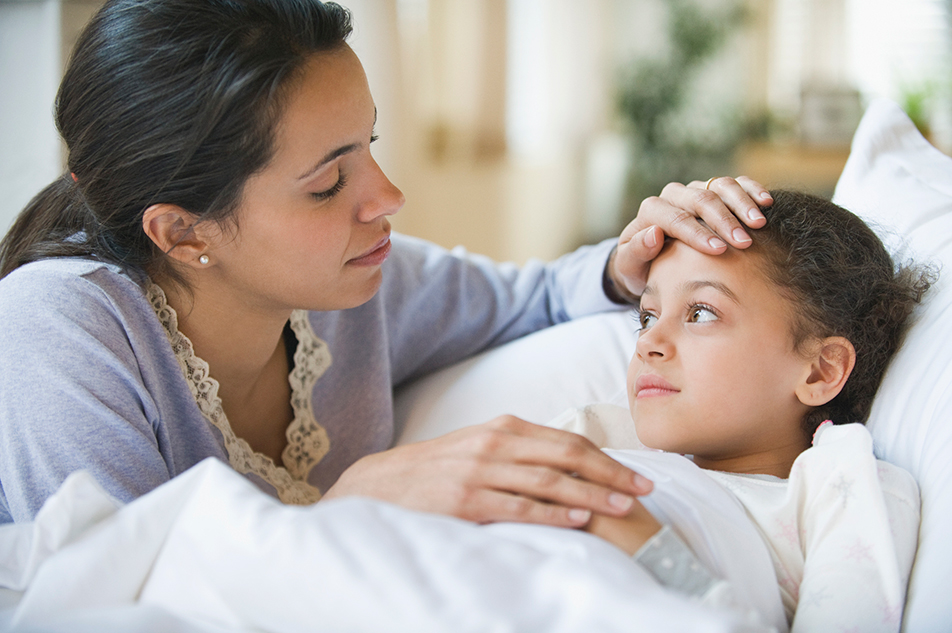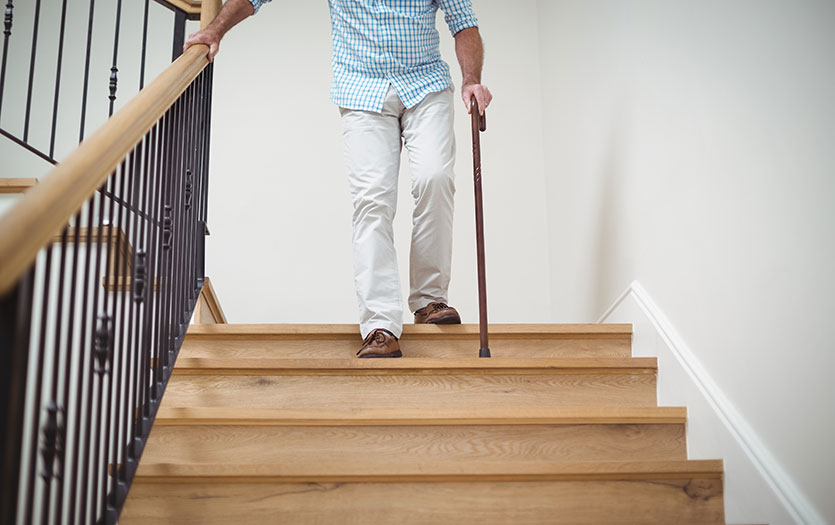
For parents, the recent pandemic has brought a barrage of questions, particularly as news of foot rashes and pediatric-specific COVID-19 symptoms surface. We asked Duane Hougendobler, MD, PPG – Pediatrics, to set the record straight and give parents the guidance they need during this time.
“COVID toes”
Rashes are a common symptom of a viral infection. For years, we’ve seen this with, most notably, measles and chickenpox before vaccines were available. With COVID-19, we don’t yet have a rash that is exclusively indicative of this virus. So, while we’re seeing reports of flat, red lesions around the toes and feet, the bottom line is we can’t confirm that this is a direct link to coronavirus disease.
The idea of linking sporadic symptoms to a new virus is very common. It’s an observation. One provider notices a symptom, they share it with others in the field and we begin to pay attention and draw correlations and see if there is a strong connection over time. Currently, there isn’t anything in the main literature regarding “COVID toes”. It’s also difficult to confirm the connection as there isn’t a significant reason or recommendation to test pediatric patients for coronavirus in the outpatient setting at this time. This could change, but we are currently following testing guidelines from the Centers for Disease Control and Prevention (CDC) and the Indiana State Health Department.
When it comes to the presentation of a rash, the bottom line is that parents can assume a viral infection is likely present. This could be COVID-19, or it could be a host of other viruses. Again, we don’t have one rash that we associate with coronavirus, though someday, as things unfold, we might. If you notice hives, which are slightly different, it is likely an allergic reaction. The bottom line for parents is, at this time we can’t say that a rash on your child’s foot means they have COVID-19, but it certainly indicates that something is going on, and it’s best to take precautionary measures.
Other symptoms of COVID-19
The tricky thing about coronavirus is that, in most children, it’s like any other cold. They might have congestion, drainage, fever, cough and/or diarrhea. All of these symptoms can be COVID-related, or a sign of many, many other viral infections. Right now, our biggest frustration is that we don’t have COVID-19-specific issues where we can identify the virus. We can only confirm that it’s viral, knowing that COVID-19 is on that list.
Treatment and prevention
If parents are seeing a rash that’s more than dry skin or something the child hasn’t had before, or any of the other viral symptoms listed above, it’s best to isolate and avoid social contact with others until the symptoms dissipate. You will want to keep the child home and avoid exposure particularly to those in the high risk groups, which includes:
- those 65 and older
- those who live in nursing homes or long-term care facilities
- people with underlying medical conditions
- those receiving chemotherapy treatments
- anyone considered immunocompromised
Isolation can be challenging if there are multiple children or older adults in the home. Utilize a spare or the child’s bedroom. If they are old enough, provide entertainment to keep them as busy as possible. Watch secretions and wipe down surfaces often. If they are old enough, provide a cloth mask for them to wear. (Note: Do not put cloth masks on infants or children under the age of 2!)
Symptoms can be managed as you typically would for a viral infection. Make sure the child is eating and drinking plenty of fluids, getting enough rest and use over-the-counter fever reducers to manage the fever.
Ideally, you want to keep the child home and away from others until they have been symptom-free for 3-4 days.
When to seek care
If a child is in respiratory distress, huffing and puffing or discolored in any way, seek emergency care immediately. If you have any reason to suspect they are in need of oxygen or dehydrated, medical intervention is imperative. We don’t want you to go the Emergency Room unnecessarily, but there are still very real concerns that need to be addressed in this setting. If your child is having any difficulty breathing, call 911 or take them in promptly.
If they have a mild cough, fever of 103 that is controllable with medication, they’re eating and drinking and playing, I’m not as concerned. Parents will want to keep an eye on their fluid intake and whether or not they are getting sleep and do their best to keep the child on a schedule. Your pediatrician is available through virtual visits if you have concerns. Reach out to them via MyChart for further guidance.
A podiatrist weighs in
Ashley Bojrab, DPM, FACFAS, ABPM, PPG – Podiatry, added the following commentary to the concept of “COVID toes”:
As the COVID-19 pandemic continues, scientists and doctors are learning more regarding signs and symptoms tied to the virus. Some countries are publishing articles speculating that abnormal lesions or markings on the feet are a potential sign of COVID-19.
Often seen in the younger population, these rashes are described as red or purplish discolored lesions on the feet that are typically painful to touch, with some patients experiencing a burning sensation. The articles also suggest this is caused by inflammation from a severe infection, which leads to tiny blood clots in the blood vessels in the feet.
Although none of this information has been confirmed, data continues to come in. These observations are helpful for clinicians working to provide diagnoses. It is recommended to be mindful and observant of your feet daily to provide as many clues as possible to get to the most accurate diagnosis.



